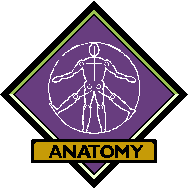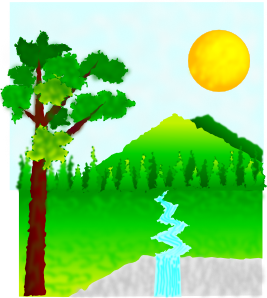click on icon to go to that website
|
||||||||||||||||||||||||
|
Practice Population Problems
Closed population - define: a population with no immigration or emigration (or we ignore the fact that there is)
1. A bacterial culture has an intrinsic rate of growth (rc) of 12%/hour. A microbiologist has estimated the population to be 1,957 in a petri dish. How many bacteria will there be in the next hour? How long will it take for the culture to double in size?
Answer: N = 1,957 rc= 12%/100% = .12 ΔN = rN = 0.12(1,957) = 234.84 + 1,957 = 2,192 (rounded up) Doubling time = 70/rc% = 70/12% = 5.83 hours
2. A forest ecologist is monitoring the tree population in a small woodlot. He has determined that the current population of trees is 1285. He also know that for every 100 trees, an average of 26 seeds survive to becoming a tree in ten years. He also knows that for every 100 trees, 5 will die in ten years. What would be the projection for the number of trees in the woodlot in 10 years? in 20 years?
Answer: N = 1285, b = 26/100 = 0.26 d = 5/100 = 0.05 r = b-d = 0.26-0.05 = 0.21 ΔN = rN = 0.21 x 1285 = 269.85 or 270 Population in 10 years = N + ΔN = 1285 + 270 = 1555 Population in 20 years: 1555 x 0.21 = 326.55 or 327 ® 1555 + 327 = 1882
Open population - define: a population that includes migration
3. A population of finches on Isabella Island in the Galapagos Islands
has a current population is 1312. In 2012, 256 finches were born into
the population and 228 died. Twenty-two birds flew from an adjacent
island onto Isabella and 16 left Isabella to adjacent islands. a) Based
on 2012 data, what is the annual rate of growth for this population? b)
What will be the population be in 2013?
Answer: Take note: birth rate, etc. are not given as per 1000, but you can calculate r using 1312 in the denominator. a) ro = [(b-d)+(i-e)]/1312 = [(256-228)+(22-16)]/1312 = [28 + 6]/1312 = 34/1312 = 0.026 or 2.6% b) Individuals to add to 2013 = ro x N = 0.026 x 1312 = 34.1 ~ 34 2013 population: 1312 +34 = 1346
4. The population of mice in a prairie is estimated to be 476 in 2002. In an average year, 46 mice are born per 100 mice, 53 die per 100, 17 per 100 move into the the prairie from the adjacent habitat and 12 per 100 move out. What is the intrinsic rate of growth (rc), what is the annual population growth (ro), and what is the net migration rate?
Answer: rc = b-d = 0.46-0.53 = -0.07 ro = (b-d)+(i-e) = (0.46-0.53)+(0.17-0.12) = -0.07+0.05 = -0.02 NMR = i-e = (0.17-0.12) = 0.05 Because the annual rate of growth is negative, this population is declining.
|
||||||||||||||||||||||||
|
ARCC home Joan's home Biology Department © Joan McKearnan 2007 Send comments to: joan.mckearnan@anokaramsey.edu Any views expressed on this page are strictly those of the page author or part of an educational activity and not those of Anoka-Ramsey Community College. Last revised: Wednesday, 11 April 2007
|










